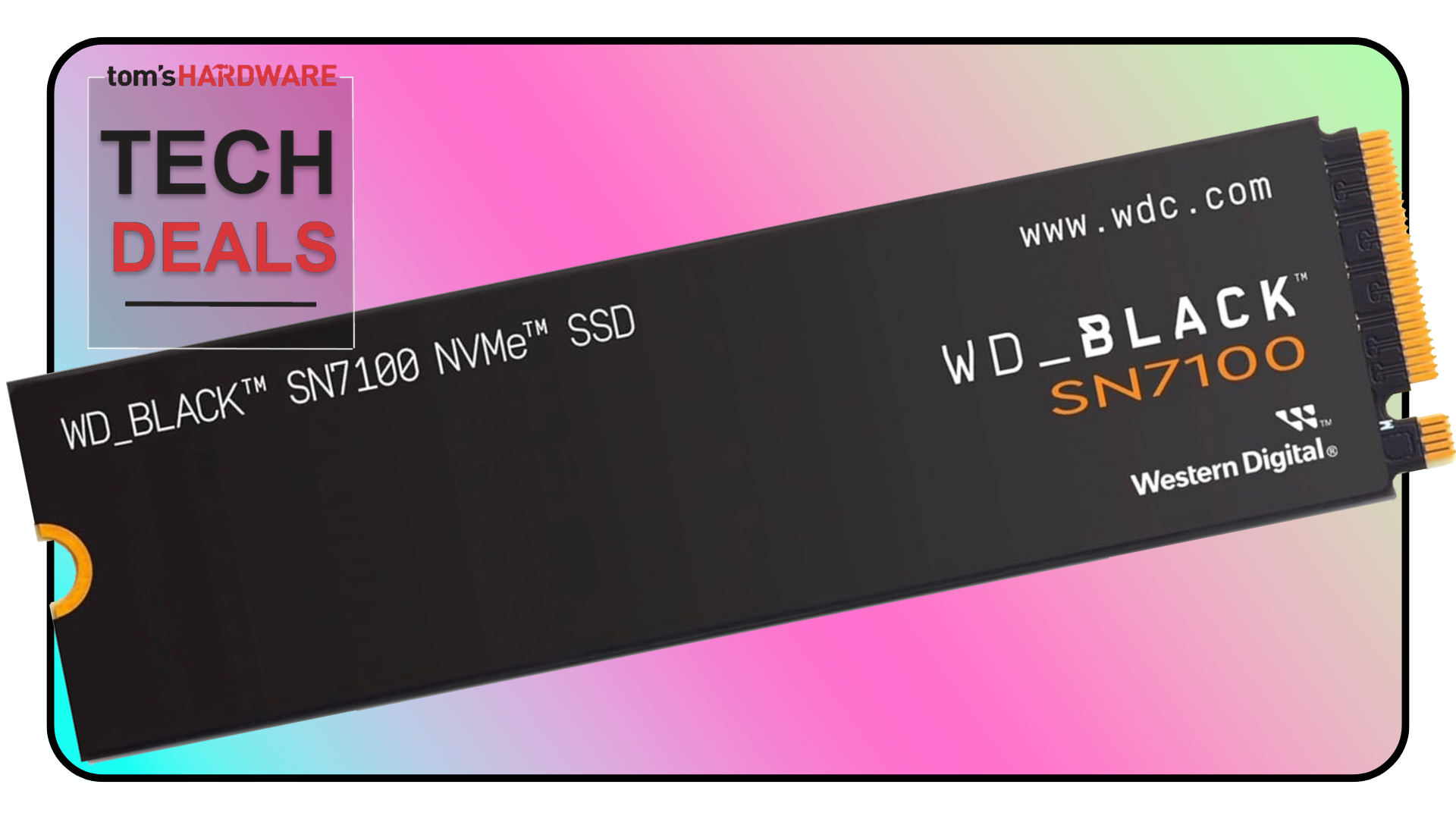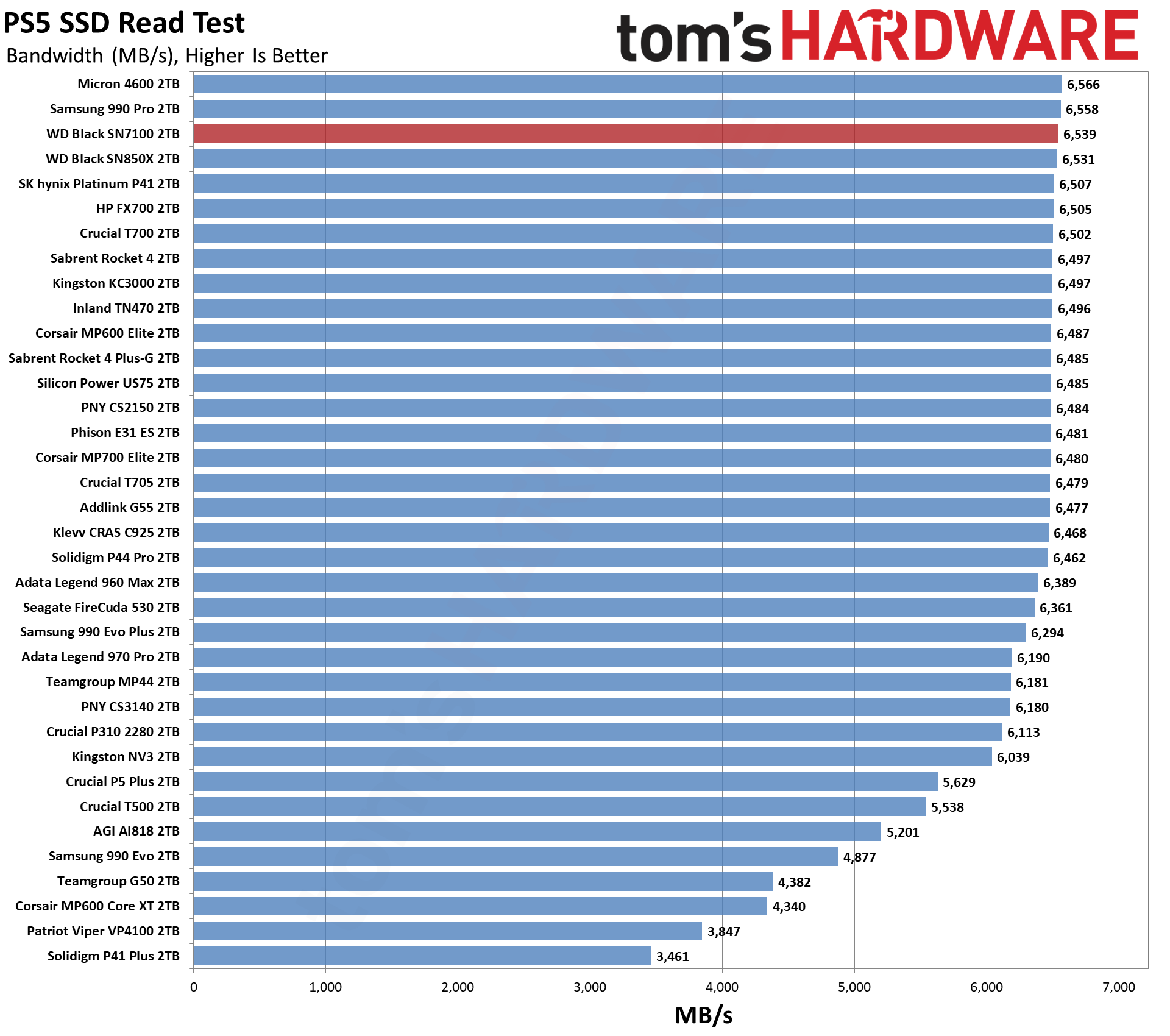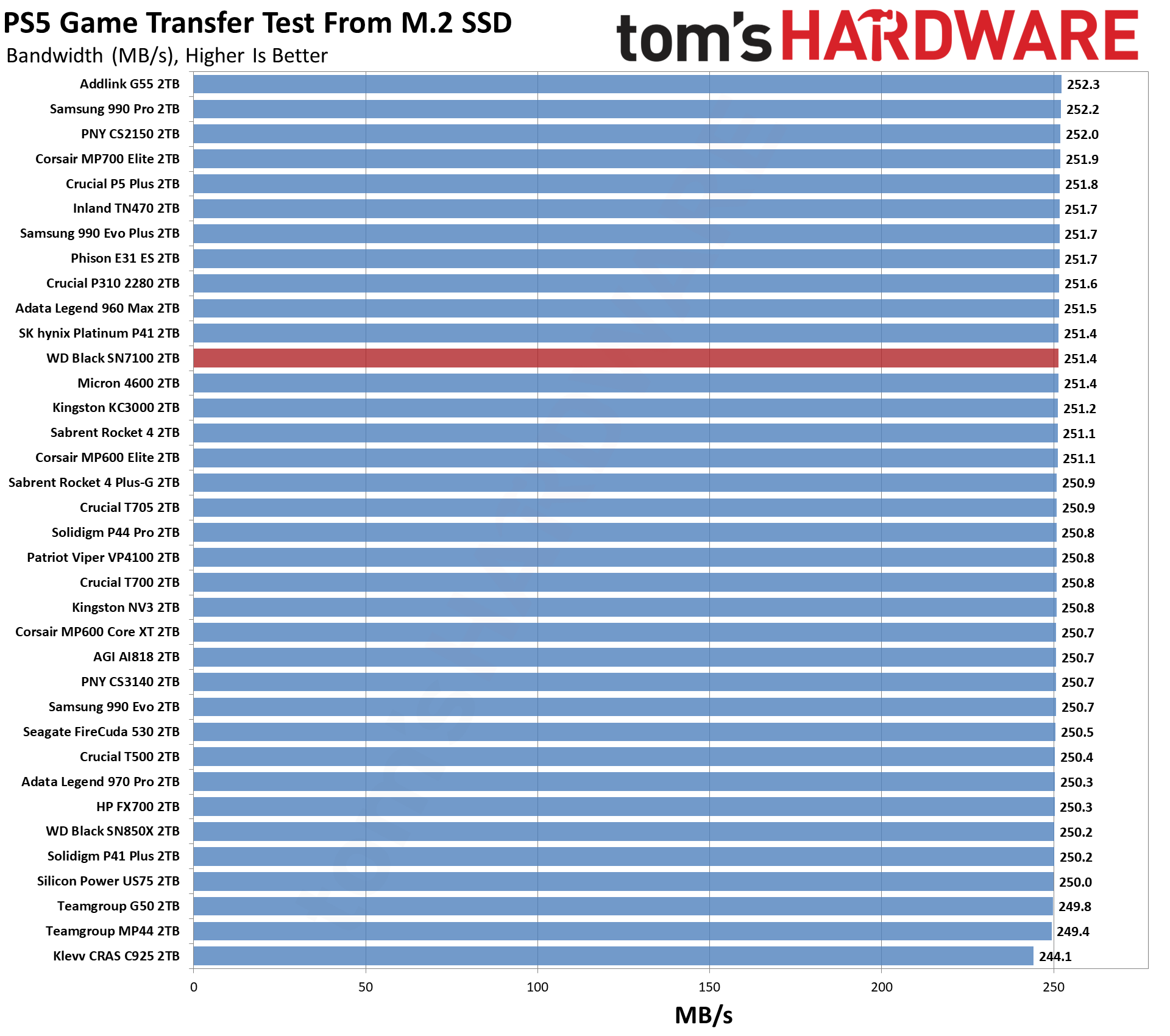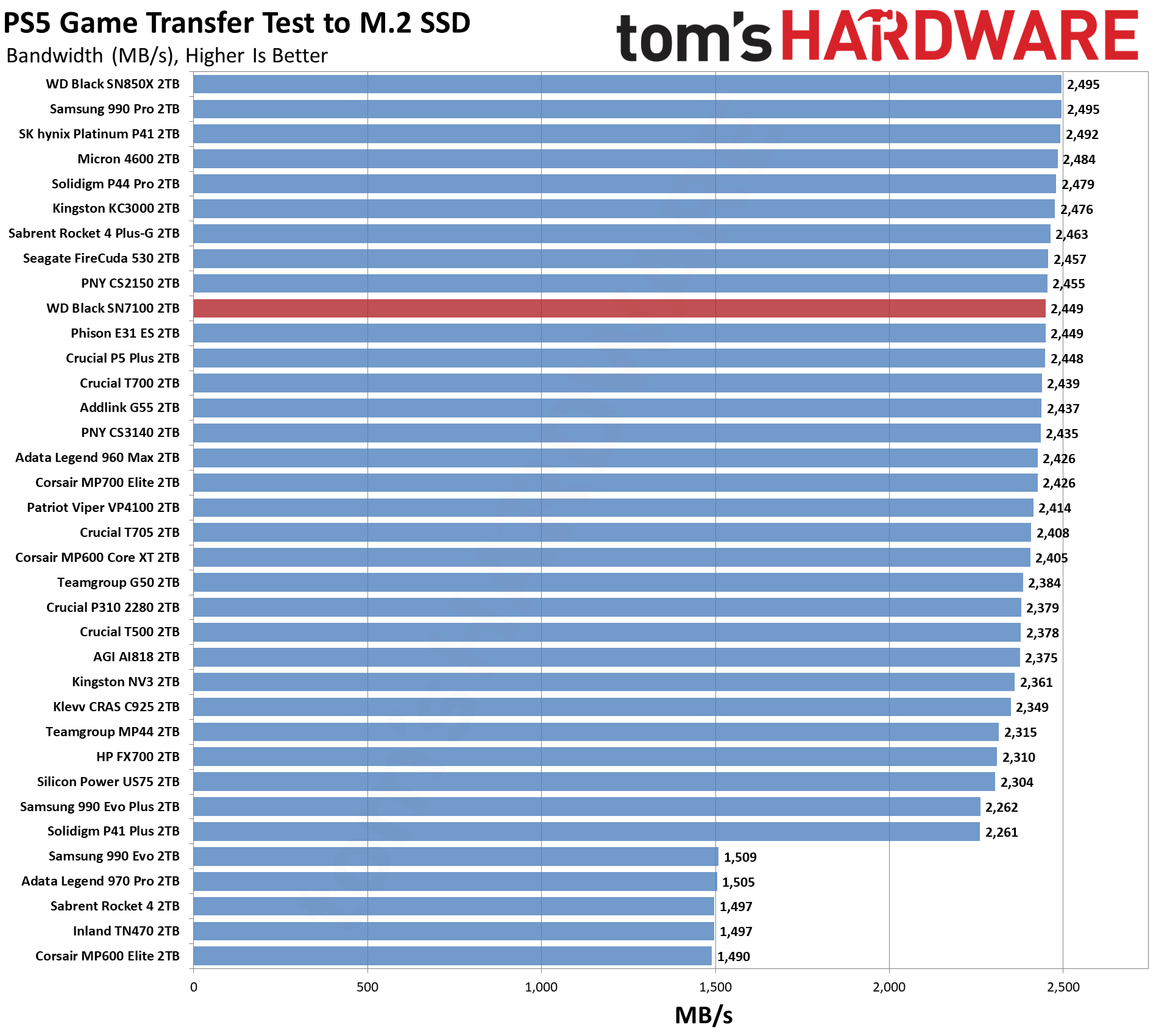Grab this 4TB WD Black SN7100 SSD at its lowest-ever Amazon price — the most power-efficient storage drive for your laptop, PlayStation 5, or PC

If you want huge amounts of storage capacity in your PC, laptop, or PlayStation 5 console and don't want to pay the Earth for it, then we have a good deal to highlight today. This 2280 M.2 SSD from SanDisk sports a massive 4TB of capacity, and hits an all-time low price on Amazon (confirmed using CamelCamelCamel's Camelizer price-checking extension). Save $40 off the list price of $269.99 if you purchase this drive today, and bag 4TBs of storage for just $229.99.
The WD_Black SN7100 SSD is the updated version of the WD_Black SN770, which features SanDisk's latest proprietary Polaris 3 controller and 218-layer TLC. The SN7100 sets a new benchmark with its low power consumption and puts in excellent random read performance to boot. Having such a low power consumption level means this drive is a great choice if you're looking for a hardware component that produces less heat and will also be less taxing on devices that rely on battery power.
Please take a look at our review of the WD_Black SN7100, where we cover the performance of this drive via our benchmark testing in real-world applications. Perfect for laptops, the SN7100 is a single-sided SSD with the standard 2280 form factor. It has a large 4TB capacity and the latest proprietary Polaris 3 controller combined with SanDisk's 218-Layer TLC (BiCS8) flash NAND. The drive can reach speeds of up to 7250MB/s read and 6900MB/s write. The Sn7100 has an endurance rating of 2,400TBW.
The SN7100 is a single-sided SSD with the standard 2280 form factor. With 4TB of capacity, the SN7100 uses SanDisk's proprietary Polaris 3 controller and also SanDisk's 218-Layer TLC (BiCS8) with speeds of up to 7250MB/s read and 6900MB/s write. Endurance is rated at 2,400TBW.
The WD_Black SN7100 is DRAM-less, which can put some people off, as these types of drives tend to slow down the more full the drive gets, but with HMB and SLC improvements, the drive is still plenty fast enough to perform well in devices like the PlayStation 5, where is actually performs exceptionally well. See our charts below, where the SN7100 finishes near the top of the table and even beats out exceptional drives such as the SN850X.



If you're looking for more savings, check out our Best PC Hardware deals for a range of products, or dive deeper into our specialized SSD and Storage Deals, Hard Drive Deals, Gaming Monitor Deals, Graphics Card Deals, or CPU Deals pages.
Get Tom's Hardware's best news and in-depth reviews, straight to your inbox.

Stewart Bendle is a deals and coupon writer at Tom's Hardware. A firm believer in “Bang for the buck” Stewart likes to research the best prices and coupon codes for hardware and build PCs that have a great price for performance ratio.
-
Stomx This drive has SLC cache. SLC has orders of magnitude larger endurance than TLC still it is not an eternal and fast like the DRAM cache. Have anybody experienced any problem with wear off of SLC cache due to the processes doing frequent writes to the cache?Reply
I've never tried DRAMless M.2 SSDs before but due to the progress there might touch 8TB ones when they drop below $399 for which good time is long overdue. We have seen on Amazon prices for 4TB drives $185, $175, $170 and even $135 almost two years ago and I still keep the confirmation of that (how to post the picture here? Site Postimages by some reason does not show them here) -
DingusDog I don't believe it's faster than SN850X less than 10mb is miniscule and within the margin of error. Also there's a ton of negative reviews for this drive on Amazon saying it died prematurely. Personally I'd stay far away.Reply -
abufrejoval Reply
DRAM less doesn't actually mean there is no DRAM involved at all: that would be increcibly slow because of the various storage management layers that are required to get endurance out of flash. It just means means that it uses the host's RAM to store all the administrative data instead of on-device DRAM.Stomx said:This drive has SLC cache. SLC has orders of magnitude larger endurance than TLC still it is not an eternal and fast like the DRAM cache. Have anybody experienced any problem with wear off of SLC cache due to the processes doing frequent writes to the cache?
I've never tried DRAMless M.2 SSDs before but due to the progress there might touch 8TB ones when they drop below $399 for which good time is long overdue. We have seen on Amazon prices for 4TB drives $185, $175, $170 and even $135 almost two years ago and I still keep the confirmation of that (how to post the picture here? Site Postimages by some reason does not show them here)
That DRAM on the device and the host doesn't really tend to contain a lot of disk data cache, at least not write data, because that's inherently dangerous when a host might loose power or the host crashes and takes that buffer away. And wasting RAM on read data usually makes little sense on SSDs. On device DRAM mostly allows for more speed consistency as DMA access from the SSD controller to host RAM sufferes PCIe bus contention and arbitration on the host's memory bus. On the other hand host RAM might allow for full mapping tables where on-device ram may have to page or swap active portions, because it's likely more plentiful, but that's just me guessing.
Whatever write cache is required when sectors can't or shouldn't just be written individually seems to be actually held on the SSD controllers itself, which feature relatively large chunks of memory to work on management structures and caching the essential bits. Not sure if these are all SRAM, or feature some DRAM or even non-volatile magneto-restistive RAM, vendors aren't shouting these things out loud.
Personally, I used to stick with SLC/MLC/DRAM as long as possible, because I always assumed heavy loads on those small early drives. But at 4TB sizes DRAM-less and even QLC may be ok, even more laptop battery friendly, if your usage pattern doesn't have heavy overwrites.
On a console or in a Steam cache, that may be the case with daily updates often measuring in gigabytes.
On most 'typewriter class' laptops, that seems far less likely, but then those aren't very often going to require 4TB unless e.g. you're hoarding media locally.
SLC isn't a distinct medium in these modern drives, but a destinct operating mode: in theory an SSD controller could decide to use all flash as SLC or TLC (at varying capacities), even MLC or QLC if both the controller and the flash chips supported that. And while controller might decide to use a certain portion of all available flash consistently only in SLC mode or MLC/TLC/QLC, defect management is happening with both pools in a similar manner, perhaps from a shared spare pool. Blocks that have gone beyond endurance will get replaced by spares as long as there are any.
And if things got really tight, an SSD controller might actually choose to reduce the cache SLC parts since it's usually dynamic, instead of reporting unfixable defects in the data parts, slowing down the drive, before going into write-only terminal state: what a given firmwares will do, I'd rather not try on my own drives.
